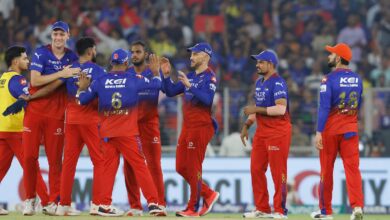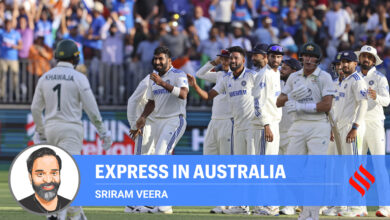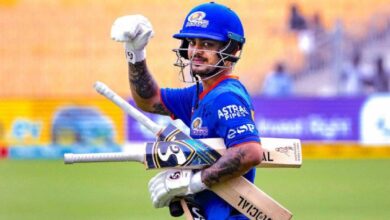Ahead of Paris Olympics, why Indian hockey team coach Craig Fulton is trying to assemble team of 10 ‘aloos’ and a ‘keeper | Hockey News

In his typical self-effacing manner, Manpreet Singh once said, in a lighter vein, that he is called aloo his teammates. One of the fittest players in the world, Manpreet was referred to as a humble potato for a simple reason: the utility factor. He could be used anywhere on the field, in any shape the team plays. extending that logic, India coach Craig Fulton is now trying to assemble a team of 10 aloos and a goalkeeper.
A centre-half, Manpreet, has played as a defender and an attacking midfielder. A forward, Gurjant Singh, has dropped back and played on the right of the midfield. Defenders have pushed up, midfielders switch positions among themselves and someone like Hardik Singh has covered literally every part of the field.
On Monday, Manpreet started the FIH Pro League match against Spain at his bread-and-butter position in the centre of the midfield, unlike some of the previous games where he was the defender. With a little more than 30 seconds played, Manpreet lobbed the ball from the centre to the right, near the circle.
Ready to receive the aerial was Jarmanpreet Singh, the right-back. Soon after push-back, Jarmanpreet – an attack-minded defender – marched forward and Hardik Singh, the all-rounder, immediately covered his space.
One touch to control the ball, followed a powerful hit and India found an unlikely scorer on a night they drew 2-2 before getting a bonus point from a shoot-out win.
Fulton’s ‘experiments’
It was a scratchy, error-ridden performance India, but the result remains of academic interest in a competition where all Paris-bound teams are fine-tuning their preparations. Fulton’s ‘experiments’ are in sync with that bigger picture.
Fulton isn’t chasing total hockey. His motives are driven the need to have a Plan B, just in case the team is faced with an untoward situation – a card leading to suspension or an injury – during the Olympics.
“We need to build some depth in a few areas. Because if you have just one and then you have two injuries at the wrong time, then who’s ready to play?” Fulton says.
Fulton talks about the preparation phase in ‘blocks’. This Pro League ‘block’ is to identify his team for the Paris Olympics, which begin on July 26. Also crucially, it’s to get the players to master multiple positions.
“It’s different to play those roles. We are using this block for that and hopefully will set-up the Olympic squad after this and have enough depth everywhere,” Fulton adds.
Playing in different positions might not be a new concept – Manpreet, over the years, has shouldered many responsibilities – but there have been instances in Indian hockey in the past where a forward, during the London Olympics, refused to play as a midfielder during a match, saying he wasn’t comfortable.
While that incident has no bearing on what’s happening now, Fulton wants to ensure if it comes to any makeshift arrangements during a match, his players will be prepared.
And so, someone like a Gurjant – who was rested on Monday evening – has played as a right midfielder in some matches. “Coach is trying to get some of us comfortable in playing two positions at least,” says Gurjant, the scorer of two of the most famous goals for India, the winning goal of the 2016 Junior World Cup and one against Germany in the Tokyo Olympics bronze medal match.
It can be argued if it’s too close to the Olympics to introduce such concepts, especially when – on the evidence of the last three matches against Spain, Ireland and Australia – India need a lot of work in many other areas.
But the players seem to have bought into Fulton’s ideas and the outcomes in the Pro League, win or lose, do not seem to impact their long-term targets.
“We have to change our positions according to situations,” Hardik says. “A centre striker might have to play as a DMF (defensive midfielder). A DMF moves to right-half; right-half will move a little inside… It’s all a part of the strategy.”
For midfielders and attackers – virtually interchangeable positions – it might not be a huge ask. “But if you are playing as a DMF and then as an attacker, it might get tough to adjust,” Gurjant says.
That’s not been a problem for Manpreet, who is impeccable as a centre mid, seamlessly transitions into central defender and gallops to join the attack. He’s done that since the time he transitioned from junior to senior team, and now as the most-capped player in the current squad. Fitting in without any hassle.
“Kahin bhi fit ho jaenge, aloo jaise (we’ll fit anywhere like a potato),” he’d once joked. If Fulton has his way, he’ll not be the only one.







